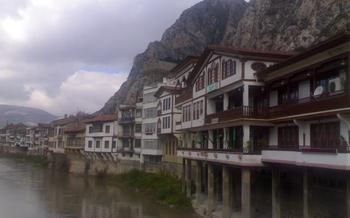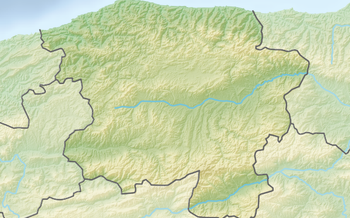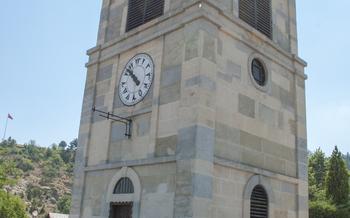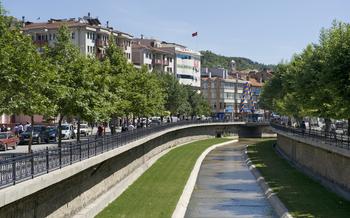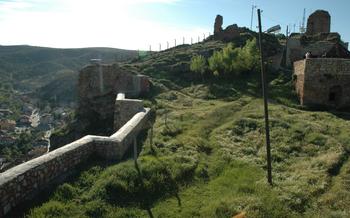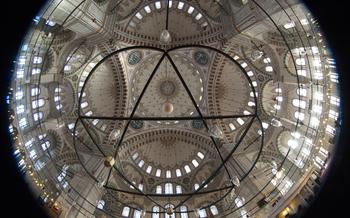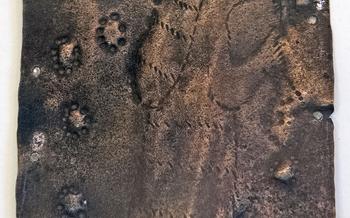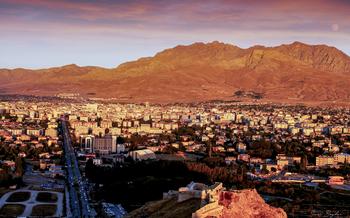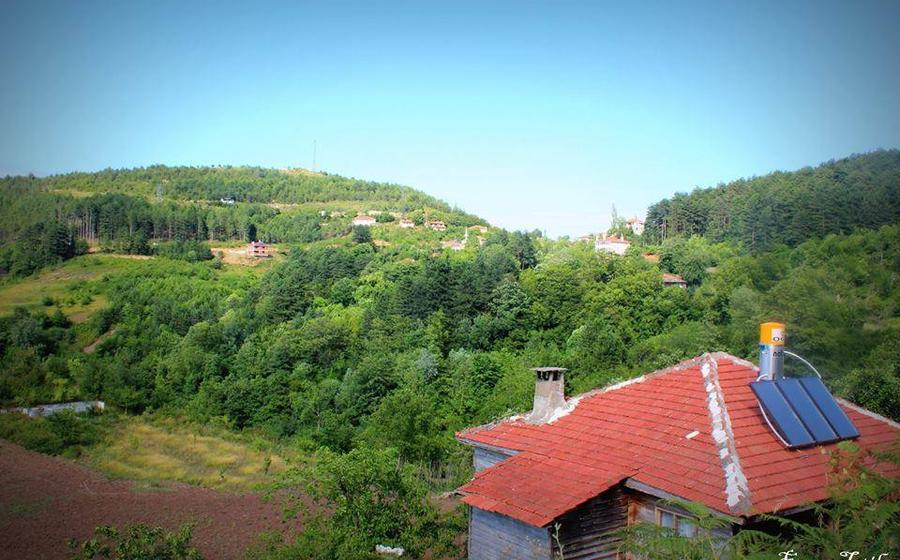
Kastamonu Münire Sultan Medresesi
- A Journey to Kastamonu's Architectural Gem:
- A Symbol of Education
- Preservation Efforts: Ensuring the Medresesi's Legacy
- The Hidden Beauty Within:
- Location and Accessibility:
- Visiting Hours and Fees:
- Guided Tours and Self-Exploration
- Exhibition and Cultural Events
- Unique Photo Opportunities
- Cultural Immersion: A Journey into Turkish Traditions
- Off-the-Beaten-Path Destination
- Historical Context and Background
- Local Customs and Traditions
- Insider Tip: Unveiling Hidden Treasures
A Journey to Kastamonu's Architectural Gem:
Nestled within the historic city of Kastamonu, Turkey, stands a remarkable architectural masterpiece, the Kastamonu Münire Sultan Medresesi. This magnificent monument, dating back to the 16th century, is a testament to Ottoman-era craftsmanship and a symbol of Kastamonu's rich cultural heritage. Built in honor of Münire Sultan, daughter of Sultan Süleyman the Magnificent, the medresesi has played a pivotal role in the education and enlightenment of Kastamonu's inhabitants.
The Kastamonu Münire Sultan Medresesi is a captivating blend of architectural styles, showcasing intricate stone carvings, vibrant tiles, and elegant calligraphy. Its construction signifies the Ottoman Empire's commitment to education and its role as a center of Islamic learning. As you step through its grand entrance, you will be transported back in time, immersing yourself in the history and splendor of this architectural gem.
A Symbol of Education
The Kastamonu Münire Sultan Medresesi played a pivotal role as a madrassa, an Islamic school, during the Ottoman era. It held a prominent position in the city's educational landscape, providing instruction in various Islamic sciences and disciplines. The medresesi served as a center of learning and scholarship, nurturing the intellectual and spiritual development of students.
Importance in Islamic Education:
The madrassas were instrumental in disseminating Islamic knowledge and promoting religious education throughout the Ottoman Empire. They played a crucial role in preserving and transmitting Islamic traditions, customs, and values to future generations. The Kastamonu Münire Sultan Medresesi was renowned for its high standards of teaching and its commitment to providing a comprehensive Islamic education.
Educational Programs Offered:
The medresesi offered a wide range of educational programs, catering to students of varying ages and backgrounds. The curriculum included subjects such as Quranic studies, Islamic law, theology, Arabic language and literature, logic, philosophy, mathematics, and astronomy. Students received a well-rounded education that prepared them for various roles within the Ottoman society, including religious leadership, administration, and scholarly pursuits.
Impact on the Intellectual Landscape of Kastamonu:
The Kastamonu Münire Sultan Medresesi had a profound impact on the intellectual landscape of the city. It fostered an environment of learning and inquiry, attracting scholars and students from across the region. The medresesi's contributions to education and scholarship helped shape the intellectual and cultural identity of Kastamonu, making it a renowned center of Islamic learning and scholarship.
Preservation Efforts: Ensuring the Medresesi's Legacy
Kastamonu Münire Sultan Medresesi has undergone extensive restoration projects to preserve its historical integrity and showcase its architectural beauty. These efforts have been crucial in ensuring the legacy of the madrassa and maintaining its significance in Kastamonu's heritage.
The restoration process involved meticulous conservation techniques, respecting the original design and materials. Skilled artisans employed traditional methods to repair damaged stonework, restore intricate carvings, and rejuvenate the vibrant colors of the tiles.
The restoration projects faced several challenges, including sourcing authentic materials, addressing structural issues, and ensuring minimal disruption to the historical fabric of the building. However, the dedication and expertise of the restoration team have resulted in a successful revival of the madrassa, allowing visitors to appreciate its architectural splendor and immerse themselves in its historical significance.
The preservation efforts have not only ensured the physical longevity of the Kastamonu Münire Sultan Medresesi but have also contributed to the recognition of its historical value. The madrassa is now a protected monument, attracting visitors from around the world who seek to explore its architectural beauty and delve into the rich history of Islamic education in Turkey.
The Hidden Beauty Within:
The Kastamonu Münire Sultan Medresesi is a testament to Ottoman craftsmanship, boasting intricate stone carvings, decorative tiles, and captivating calligraphy. The exterior façade is adorned with exquisite carvings that depict floral motifs, geometric patterns, and verses from the Quran. The interior walls are lined with stunning tiles featuring vibrant colors and intricate designs, creating a mesmerizing visual spectacle. The use of calligraphy adds a touch of elegance and spirituality to the space. The inscriptions include verses from the Quran, hadiths (sayings of the Prophet Muhammad), and poetic lines, providing visitors with a deeper understanding of Islamic culture. The design elements and symbolism found throughout the medresesi reflect the artistic sensibilities and religious beliefs of the Ottoman period. Every corner of this architectural masterpiece holds a hidden treasure, inviting visitors to explore its rich artistic heritage.
Location and Accessibility:
The Kastamonu Münire Sultan Medresesi is conveniently situated in the heart of Kastamonu, rendering it easily accessible for visitors. Its precise address is Atatürk Bulvarı, Kastamonu Merkez, Kastamonu, Turkey. To reach this architectural treasure, one can opt for various transportation modes.
For those arriving by air, the closest airport is Kastamonu Airport (KZR), approximately 10 kilometers from the city center. From the airport, visitors can take a taxi or rent a car to complete their journey to the medresesi.
Alternatively, train enthusiasts can embark on a scenic rail adventure. Kastamonu Railway Station is a convenient transport hub, connecting the city with major destinations across Turkey. Upon arrival at the station, travelers can conveniently hop on a local bus or taxi to reach the medresesi.
For those seeking a more immersive experience, road travel offers an excellent opportunity to explore the region's captivating landscapes. Kastamonu is well-connected by a network of highways and roads, making it accessible by car. Visitors can enjoy the flexibility of self-driving or opt for guided tours that incorporate visits to neighboring attractions.
Upon arrival in Kastamonu, navigating to the medresesi is a breeze. Located in the city center, it is within easy walking distance from numerous hotels, restaurants, and shops. Its prominent position ensures that visitors can effortlessly integrate a visit to this architectural gem into their exploration of Kastamonu's rich cultural heritage.
Visiting Hours and Fees:
The Kastamonu Münire Sultan Medresesi is open to the public for visits, offering a unique opportunity to explore its architectural wonders and immerse oneself in its historical significance. The medresesi adheres to specific operating hours and provides information on admission fees for visitors.
Operating Hours and Days:
- The medresesi is open to the public from Tuesday to Sunday, providing ample opportunities for visitors to plan their trips.
- Operating hours are from 9:00 AM to 5:00 PM, allowing visitors to explore the medresesi's intricate details at their own pace.
- It is important to note that the medresesi is closed on Mondays for maintenance and preservation activities.
Admission Fees and Ticketing Information:
- Admission to the Kastamonu Münire Sultan Medresesi is subject to a nominal entrance fee.
- Ticket prices are designed to be affordable and accessible, encouraging visitors from all backgrounds to explore this historical gem.
- Visitors can purchase tickets directly at the medresesi's entrance, ensuring a smooth and hassle-free entry process.
- For groups or educational institutions, special rates and guided tour options may be available upon request.
Advance Booking Options:
- While advance booking is not mandatory, it is recommended for groups or those seeking a personalized experience.
- Advance booking ensures guaranteed entry and allows visitors to plan their visit more effectively.
- To make an advance booking, visitors can contact the medresesi's administration or utilize online booking platforms.
Seasonal Considerations:
- The medresesi experiences seasonal variations in terms of foot traffic and weather conditions.
- During the peak tourist season (June-August), it is advisable to arrive early or visit on weekdays to avoid crowds.
- In the shoulder seasons (April-May and September-October), the medresesi offers a more tranquil experience with fewer visitors.
- Winter visits (November-March) may be affected by weather conditions, so appropriate clothing and footwear are recommended.
Planning a visit to the Kastamonu Münire Sultan Medresesi is a rewarding experience that allows travelers to delve into the rich history and architectural beauty of this hidden gem. By adhering to the operating hours, admission fees, and advance booking options, visitors can make the most of their visit and create lasting memories.
Guided Tours and Self-Exploration
Visitors to the Kastamonu Münire Sultan Medresesi have the option of exploring the historical site through guided tours or at their own pace. Guided tours are conducted by knowledgeable and passionate experts who provide in-depth insights into the medresesi's history, architecture, and significance. Guided tours are available in multiple languages, ensuring that international visitors can also benefit from the wealth of information offered.
For those who prefer to explore independently, the medresesi is well-equipped with maps, brochures, and audio guides. These resources guide visitors through the different sections of the building, highlighting important features and providing historical context. Whether you choose to explore the medresesi with a guide or on your own, you'll be captivated by its rich history and stunning architecture.
Exhibition and Cultural Events
The Kastamonu Münire Sultan Medresesi is not only a historical site but also a vibrant cultural hub. Throughout the year, it hosts a variety of exhibitions and cultural events that celebrate the rich heritage of the region. These events provide visitors with a unique opportunity to immerse themselves in Turkish culture and gain a deeper understanding of the Kastamonu Münire Sultan Medresesi's significance.
Temporary exhibitions showcase the works of local and international artists, highlighting diverse artistic expressions and perspectives. Visitors can admire traditional Turkish art forms, such as calligraphy, miniature painting, and ceramics, alongside contemporary artworks that push the boundaries of creativity.
Art workshops and demonstrations offer hands-on experiences, allowing visitors to learn about traditional techniques and create their own artistic masterpieces. These workshops are led by skilled artisans who share their knowledge and passion for their craft, providing a unique opportunity for cultural exchange and interaction.
Music and cultural performances bring the medresesi to life with vibrant melodies and captivating performances. Traditional Turkish music concerts, folk dance shows, and storytelling sessions transport visitors to another era, showcasing the diverse cultural traditions of the region.
To stay updated on upcoming events and exhibitions, visitors can check the Kastamonu Münire Sultan Medresesi's official website or social media pages. These events provide a wonderful opportunity to delve deeper into the history, culture, and artistic heritage of Kastamonu, creating a truly enriching and memorable experience for visitors.
Unique Photo Opportunities
With its stunning architectural features, intricate carvings, and picturesque courtyard, the Kastamonu Münire Sultan Medresesi offers a wealth of opportunities for capturing breathtaking photographs. The intricate stonework, decorative tiles, and elegant calligraphy provide a stunning backdrop for capturing the essence of Ottoman craftsmanship.
Photographers can frame their shots to highlight the symmetry and grandeur of the medresesi's facade, showcasing its impressive portal and delicate minarets. The interior courtyard, with its serene atmosphere and beautiful fountain, makes for a tranquil and picturesque setting for capturing the essence of Islamic architecture.
Visitors can experiment with different angles and perspectives to create artistic compositions that showcase the medresesi's unique features. The play of light and shadow throughout the day creates different moods and atmospheres, allowing photographers to capture the medresesi in a variety of lighting conditions.
After capturing their shots, visitors are encouraged to share their photographs and experiences online, using social media platforms or photography websites. This helps to promote the medresesi's beauty and historical significance to a wider audience, inspiring others to explore this hidden gem of Kastamonu.
Cultural Immersion: A Journey into Turkish Traditions
Visiting the Kastamonu Münire Sultan Medresesi is not just about admiring its architectural beauty but also about immersing yourself in the rich cultural heritage of Kastamonu. Take the opportunity to explore the surrounding historical sites, such as the Kastamonu Castle, the Grand Mosque, and the Liva Paşa Mansion, each with its own unique story to tell.
Indulge in the delectable flavors of Kastamonu cuisine, renowned for its unique dishes like keşkek, a hearty wheat and meat stew, and keşli, a type of fried dough with cheese. Savor the taste of local delicacies at traditional restaurants and cafes, where you can engage with the friendly locals and guides.
Embrace the warmth and hospitality of the Turkish people, known for their welcoming nature. Interact with the locals, ask questions, and learn about their customs and traditions. Embrace the cultural differences and gain a deeper understanding of Turkish culture, creating a truly memorable and enriching experience.
Off-the-Beaten-Path Destination
As you venture beyond the well-trodden tourist routes, you will discover the allure of Kastamonu, an off-the-beaten-path destination that offers a unique and authentic experience. Immerse yourself in the city's rich history and culture, free from the throngs of tourists. Kastamonu unveils its hidden gems, allowing you to explore tranquil streets, traditional markets, and charming neighborhoods.
Embrace the opportunity to connect with the locals, who are eager to share their stories and showcase their warm hospitality. Engage in conversations, savor the flavors of local cuisine, and delve into the region's customs and traditions. By supporting local communities, you contribute to preserving the authenticity and vibrancy of Kastamonu.
Escape the hustle and bustle of crowded tourist hotspots and find solace in the tranquility of Kastamonu. This hidden gem invites you to experience a deeper connection with the city, its people, and its captivating history. Let Kastamonu be your gateway to an authentic and unforgettable journey.
Historical Context and Background
The Kastamonu Münire Sultan Medresesi stands as a testament to the rich history of Kastamonu and the enduring legacy of the Ottoman Empire. During the Ottoman reign, Kastamonu served as a significant administrative and cultural center, attracting scholars, artists, and intellectuals from across the empire. The construction of the medresesi reflects the Ottomans' commitment to education and their patronage of Islamic architecture.
Historical figures associated with the medresesi include Münire Sultan, the daughter of Sultan Selim II, who commissioned its construction, and the renowned Ottoman architect Mimar Sinan, who is believed to have designed the building. The medresesi played a pivotal role in the intellectual and cultural development of Kastamonu, serving as a center of scholarship and Islamic learning.
Understanding the historical context of the Kastamonu Münire Sultan Medresesi provides visitors with a deeper appreciation for its significance. By exploring the Ottoman Empire's influence on Kastamonu, learning about the historical figures associated with the medresesi, and delving into its role in local history and development, visitors can gain a comprehensive understanding of this architectural gem and its enduring legacy.
Local Customs and Traditions
When visiting the Kastamonu Münire Sultan Medresesi and exploring Kastamonu, it is important to be mindful of local customs and traditions to ensure a respectful and enriching experience. Dress modestly and appropriately, covering shoulders and knees, especially when visiting religious sites. Greetings are essential, and a simple "Merhaba" (hello) goes a long way. Respect Turkish customs, like removing shoes when entering homes or mosques. Embrace the local cuisine, trying traditional dishes like keşkek (pulled wheat with meat) and keşküllü aş (a yogurt-based soup). Engage with locals, who are known for their hospitality, and don't hesitate to ask questions. Remember, cultural exchange is a two-way street, and respecting local traditions shows appreciation for the Turkish way of life.
Insider Tip: Unveiling Hidden Treasures
Beyond the stunning facade, the Kastamonu Münire Sultan Medresesi holds secret corners and hidden gems waiting to be discovered. For a unique perspective, venture to the rooftop terrace, where you'll be rewarded with breathtaking panoramic views of the city and the surrounding landscapes.
Within the medresesi's tranquil courtyard, find a secluded spot to immerse yourself in the serene atmosphere. Let the intricate carvings and decorative tiles transport you back in time as you contemplate the rich history that unfolds before you.
To capture the essence of the medresesi's architectural beauty, plan your visit during the golden hour, when the soft light illuminates the details and casts long shadows. This magical time of day transforms the medresesi into a photographer's paradise.
Before departing, seek out the local guides who possess a wealth of knowledge and insights. They will gladly share hidden stories and anecdotes that bring the medresesi's past to life, enriching your experience and leaving you with a deeper appreciation for this architectural gem.
